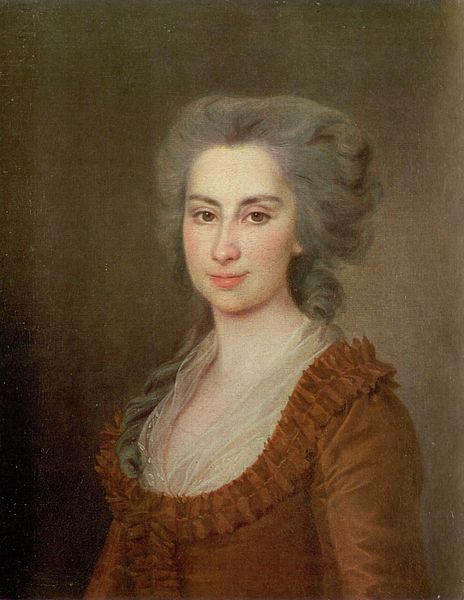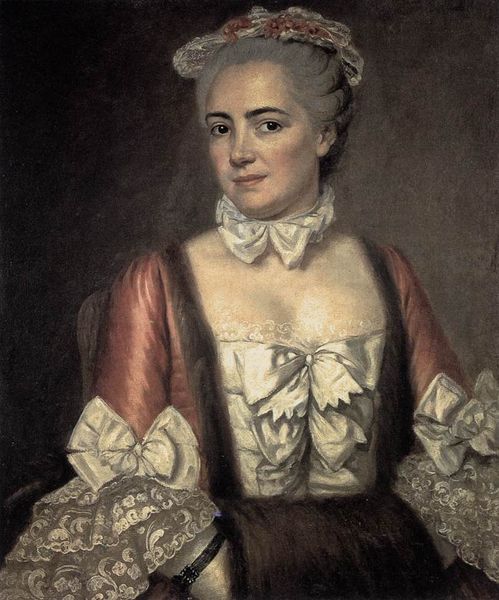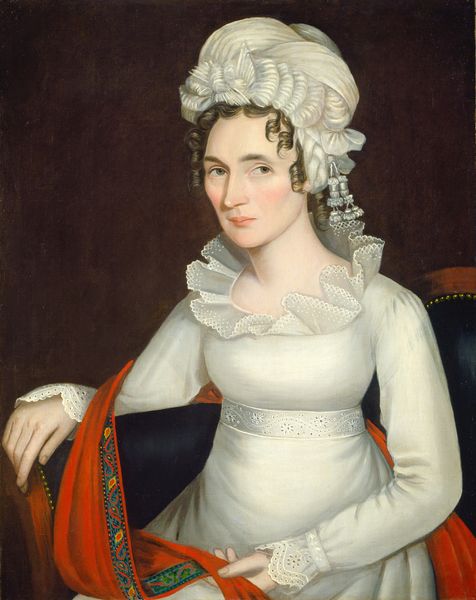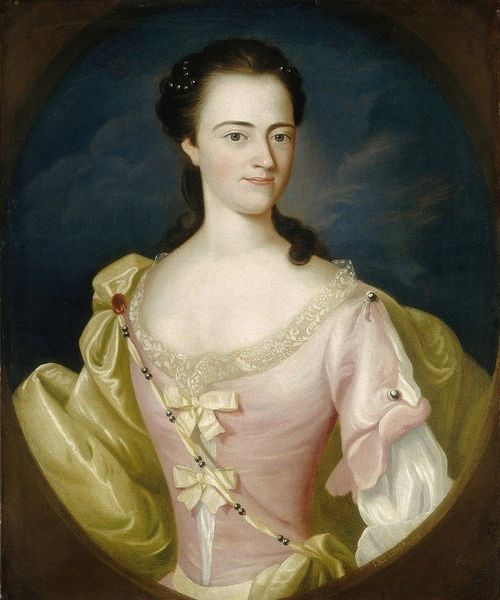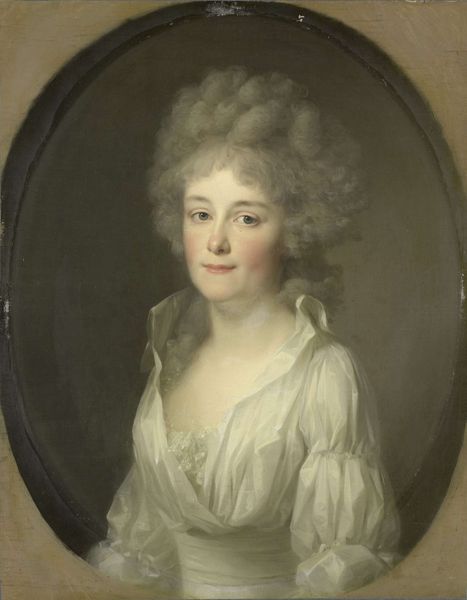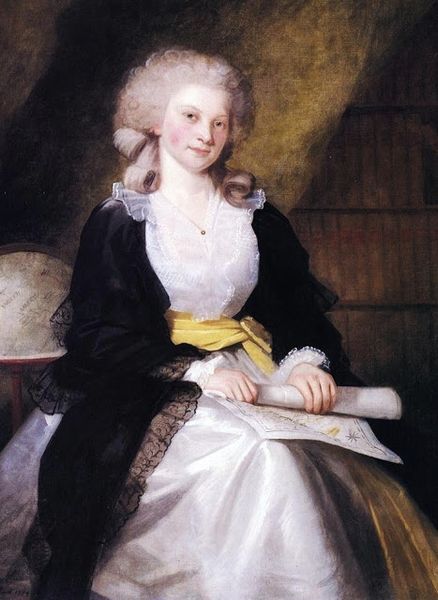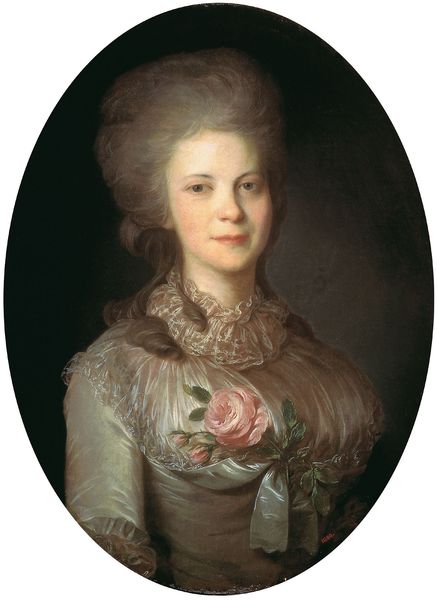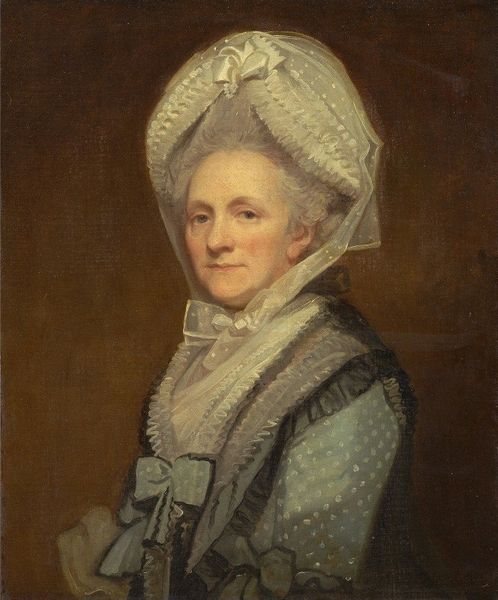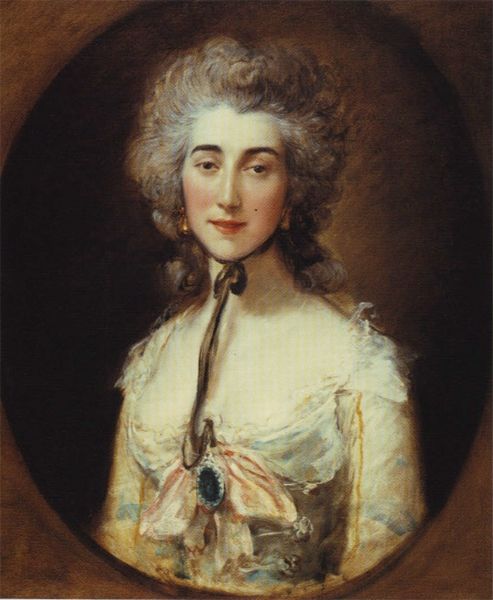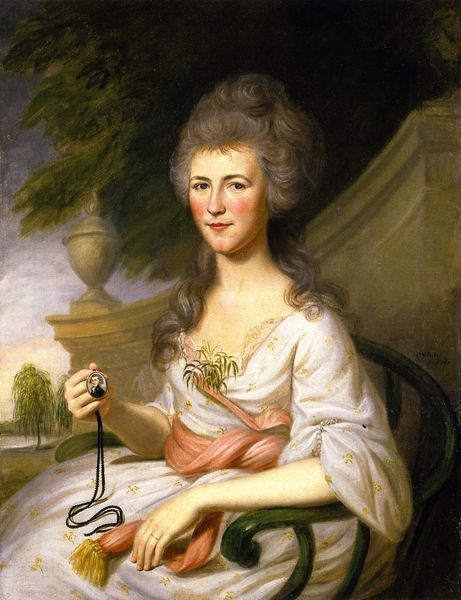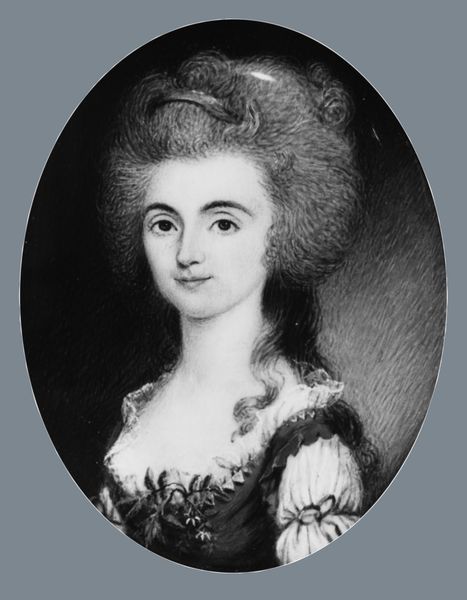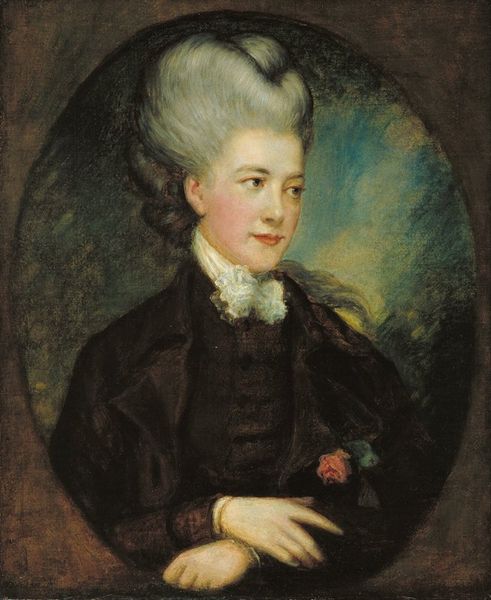
Copyright: Public domain
Curator: Looking at this serene portrait of Mrs. Alexander Hamilton, painted by Ralph Earl around 1787, one immediately senses a blend of understated elegance and reserved strength. The oil on canvas presents Eliza Schuyler Hamilton against a dark backdrop. What are your initial thoughts? Editor: The quietness is striking, isn't it? She's poised, but there’s also something melancholic in her gaze. The elaborate white dress and hairstyle, typical of the period, feel almost like a shield, or a statement. I wonder what power dynamics are at play here, as we contemplate the gaze between the artist and subject, with the knowledge of Hamilton's later infidelities? Curator: It’s a complex image. Earl's portraits often reflect the social status of his sitters. We must consider the cultural and political landscape of the time; this painting was made during a pivotal period in American history, with the rise of new social elites and the establishment of the nation’s foundational myths. Editor: Exactly. We see Eliza rendered within this framework. The neat bow around her neck, the slight, knowing smile… Is it contentment or resignation? Thinking about her historical context, the weight of expectations, being both a woman of society and bearing the brunt of her husband's public life must have been significant. Is this a sympathetic rendering, or a continuation of a patriarchal gaze? Curator: I think it's a window into the ideals of womanhood in the late 18th century. Ralph Earl has been quite attentive to neoclassical and romanticist trends as he constructs Eliza’s likeness; this is simultaneously an individual and the representation of an idea of a woman's virtue. Editor: Perhaps both. Maybe in understanding the constructed nature of these portrayals, and the layers of Eliza Hamilton’s existence, we get closer to the complicated humanity of it all. It’s a potent reminder of the invisible labor and emotional strength women poured into shaping historical moments. Curator: Agreed. It makes you reconsider history from a more holistic perspective. Editor: It certainly does. Art helps make this shift toward a future of inclusive conversations possible.
Comments
No comments
Be the first to comment and join the conversation on the ultimate creative platform.

